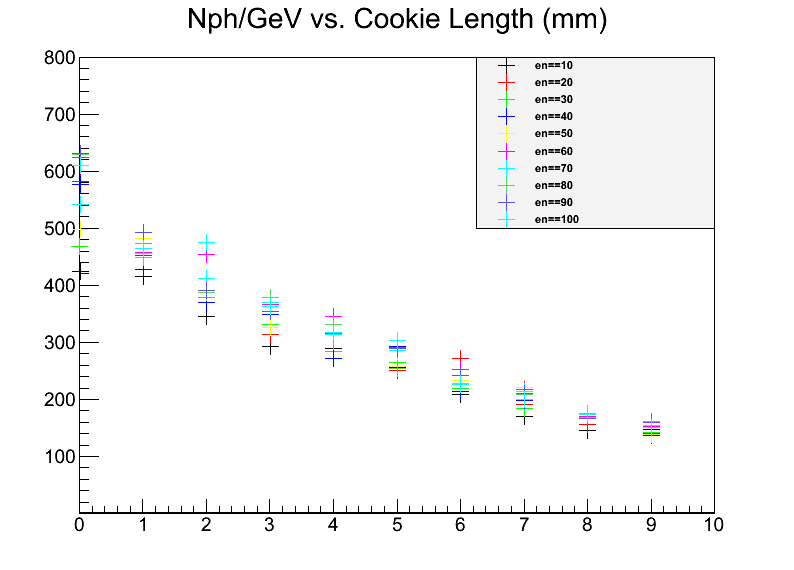Effects of phototube cookie
The idea of using a grid-like cookie in front of the phototubes was discussed here: http://drupal.star.bnl.gov/STAR/blog/heppel/2011/nov/28/improving-fms-resolution
I have implemented this idea in a Geant4 simulation of the FPD. For the plots below, I define the cookie length to be the z-direction size of the cookie (i.e. distance between Pb-glass cell and photocathode). The hole size is the grid spacing.
Below is a diagram of the proposed cookie:


 \
\
For the above diagrams, the cookie length is 0.5 cm and the hole size is 1.07 cm (cell width is 3.81 cm and cookie slat width is 0.2 cm).
I now ran the simulation by sending one photon into the FPD with energy "en" for varying cookie lengths (all with hole size 1.07 cm).
Figure 1: (no airgap between cell and cookie)

Figure 2: (no airgap between cell and cookie)

Figure 3: (0.04 mm airgap between cell and cookie)
.png)
Figure 4: (0.04 mm airgap between cell and cookie)
.png)
Figure 5: Comparison of airgap vs. no airgap (for 10 GeV)

Figure 6: Comparison of airgap vs. no airgap (for 100 GeV)

For no cookie (cookie length = 0 mm), the photon gain is higher when there is an air gap than when there is no airgap.
The difference between the photon gain for an airgap and without an airgap seems to stay relatively small and seems to decrease as the cookie length increases.
- dilks's blog
- Login or register to post comments
